Outdoor Bird Deterrent with Motion Sensor for Pigeons and Woodpeckers
$49.98
Stop the daily mess and 5 a.m. drumming with a humane, motion activated fix. This solar ultrasonic animal repellent uses a PIR sensor to detect movement, then delivers quick sound and light cues that nudge pigeons, woodpeckers, squirrels, cats, and other small intruders to move along. It is weather ready, cord free, and works best as part of a simple plan: clean droppings safely, aim the unit across approach paths, and add light netting on favorite peck spots for lasting relief.
Description
If pigeons are turning your porch into a mess and a woodpecker has discovered your siding, you want a quiet fix that does not pick a fight with the neighborhood. This Outdoor Bird Deterrent with Motion Sensor for Pigeons and Woodpeckers is built for simple, hands-off protection that starts working the moment it senses movement.
It is a humane, solar-powered device that helps you cut down on droppings, pecking damage, and nightly critter raids while you keep pets, kids, and your garden in mind. Independent guidance notes that pigeon droppings carry health risks and woodpecker damage compounds quickly if you do not act early, so an automatic, motion-triggered deterrent is a practical first line in an integrated plan.
Key Customer Benefits
- Cuts mess and health risks around patios and ledges. By discouraging pigeons from roosting, you reduce droppings that can harbor Histoplasma, Cryptococcus, and other pathogens, which public health guidance flags as a real concern when droppings accumulate and become airborne dust.
- Protects siding from costly woodpecker damage. Motion triggered deterrence helps you respond early, which wildlife agencies recommend because drumming and boring can escalate fast and repairs grow expensive if you wait.
- Humane, non chemical approach that fits IPM. Instead of poisons or sticky gels, you use a sensory deterrent that slots neatly into an integrated pest management plan with exclusion and clean up, a strategy extensions and agencies consistently endorse.
- Solar convenience for continuous outdoor use. The built in panel keeps the unit working where power outlets are not practical, so you can cover gardens, decks, sheds, and boat docks without cords. Solar, motion, and water resistant housings are common features across leading outdoor repellers.
- Targets problem visitors without alarming the neighborhood. Ultrasonic output and brief fright stimuli address squirrels, rabbits, cats, and similar intruders while avoiding constant noise. Research notes that animals can habituate to any single stimulus, so a motion based cue that only fires when they show up helps keep the signal fresh.
- Backed by real world wildlife control practices. Field work on motion activated hazing systems shows strong reductions in bird presence in controlled scenarios, and extension guidance specifically calls out motion activated devices as useful for rabbits near gardens and trees.
Product Description
What this device is
This is a solar ultrasonic animal repeller with a built in motion sensor designed to discourage problem birds like pigeons and woodpeckers, as well as ground visitors such as squirrels, rabbits, stray cats, and other small wildlife.
When movement crosses its passive infrared detector, the unit wakes up and emits short bursts of ultrasonic sound and a quick visual cue from its light. That pairing is a humane scare signal that encourages animals to choose another perch or path. Agencies that manage human wildlife conflicts describe nonchemical, behavior based deterrents like this as a practical first step that reduces damage without poison or traps.
How it works
The heart of the unit is a PIR motion sensor. PIR sensors detect rapid changes in infrared energy in front of the lens, which is what you get when a warm animal moves through otherwise steady background heat. Consumer PIR modules are widely used for security and can be tuned to limit false triggers, which is why they are a good fit for outdoor wildlife deterrence where you want the device to fire only when something shows up.
When the sensor trips, the device plays ultrasonic output across a range of high frequencies and flashes a light. Ultrasonic sound is above most adult human hearing. Manufacturers and wildlife control references describe these sound bursts as an irritant that helps make a protected area feel unsafe to the target animal, especially when the sound is not running constantly. The motion only activation matters because animals can get used to a stimulus if it is repeated without context. Keeping the cue tied to their arrival helps maintain its punch.
Why this approach is effective and different
It fits IPM, not a quick gimmick. Integrated pest management means you start with sanitation and habitat changes, then add low risk deterrents. For bird problems, public health and occupational safety guidance emphasize preventing droppings from accumulating and excluding roosts. A motion based repeller supports that plan by reducing new visits while you clean and seal.
It addresses real costs. Woodpecker damage can escalate from a few exploratory taps to rows of conical holes in siding, which invites insects and moisture. Extension and Forest Service publications advise acting early and combining deterrents with repair and, when possible, exclusion on favorite pecking spots. The motion trigger gives you that early response automatically.
It reduces mess around ledges and entries. City and state health pages note that large accumulations of bird droppings can be a respiratory concern, particularly for vulnerable people and during cleanups when dust becomes airborne. Cutting down on roosting means less scraping, less odor, and fewer cleanup risks.
It is solar and weather ready. Outdoor repellers commonly pair a small solar panel with a sealed housing so you can place them where power outlets are not available, such as fence lines, sheds, or boat docks. That is exactly the kind of flexibility most homeowners need when the problem moves around.
Product Specifications
| Spec | What to Expect on This Class of Unit |
|---|---|
| Power | Integrated solar panel with backup via USB or DC adapter; often ships with rechargeable AA Ni MH cells or a single 18650 cell |
| Water-resistance | Common ratings listed by manufacturers range from IP44 to IP67, depending on housing |
| PIR motion sensor | Infrared sensor field about 110 to 120 degrees; trigger distance roughly 20 to 33 feet depending on animal size and ambient conditions |
| Coverage area | Product pages often cite zones from roughly 4,000 to 6,000 square feet for open yards; real coverage depends on placement and line of sight |
| Ultrasonic output | Multi mode frequency bands commonly stated from about 13 kilohertz up to about 50 kilohertz, sometimes with audible beeps or siren in select modes |
| Flash or strobe LEDs | Yes, typically a small bank of LEDs that pulse only on trigger |
| Controls | Sensitivity knob or button for the PIR, frequency or mode selector, and a test mode on some models |
| Materials | UV resistant ABS enclosure, stake or wall mount hardware included |
| Typical dimensions and weight | Compact head unit that is roughly the size of a small outdoor light, usually paired with a ground stake or bracket |
| Safety pointers | Do not look directly into strobe LEDs at close range. Mount above child and pet eye level. Use protective equipment when cleaning droppings and seal access points to avoid repeat visits |
How to Use and Install It Correctly
Before you start: plan and protect yourself
Walk the property and mark where activity is strongest. Look for droppings under ledges, fresh peck holes on siding, and runways along fence lines. If you need to clean droppings first, follow public health guidance. The CDC advises preventing accumulations in the first place and using protective gloves and eye protection during cleanup. Large, old deposits may call for a professional cleanup crew. This keeps you safe and removes the scent and visual cues that bring animals back.
Step 1: choose the right location
Place the repeller so the sensor “looks” across the path animals use, not just at the spot you want to protect. Face it toward the approach route to a ledge, garden bed, or eave. Motion deterrent manuals and how to guides emphasize that location is the number one success factor, so use your observations to guide placement.
Pro tip: if you are targeting a woodpecker on one wall of the house, aim the unit slightly downward from the eave toward the affected siding so the PIR sensor sees the bird as it lands. Keep at least a small offset so the device is not blocked by trim.
Step 2: mind the height, angle, and line of sight
A passive infrared sensor detects changes in heat from moving bodies. Give it a clear view and avoid obstructions like shrubs that sway. Do not point PIRs into direct sun through windows or at vents that blow warm or cold air since these create false alarms. A lighting and alarm industry rule of thumb is simple. Keep PIRs out of direct heat sources and away from moving foliage, and angle them across expected movement.
Step 3: charge the solar unit before first use
Most solar wildlife repellers perform best when the internal battery gets a full initial charge in direct sun before you switch them on. Place the panel where it receives consistent daylight. If your model includes a USB backup, top it up before you stake it in. This avoids weak first impressions that let animals learn the space is still safe. Manufacturer manuals for this class of devices reinforce proper positioning and power readiness as basics for success.
Step 4: set modes and sensitivity
Start with medium sensitivity and a mid range ultrasonic frequency or the first general mode. Trigger the unit by walking the protected approach to confirm the detection cone. Then fine tune. Increase sensitivity if intruders are slipping through. Decrease it if wind moved plants or a warm driveway create nuisance triggers. Industry guides for PIR calibration point out that careful tuning reduces false alarms and improves real detections. Rotate modes weekly so animals do not get used to one pattern.
Step 5: layer with exclusion for woodpeckers and persistent birds
Ultrasonics are a helpful prompt to “choose somewhere else,” yet woodpeckers often require physical exclusion at favorite spots. Wildlife agencies and university resources recommend lightweight bird netting hanging from the eave, kept taut and at least a few inches off the wall so the bird cannot peck through it. Plan to leave exclusion in place for a couple of weeks while visits fade. This is the single most reliable way to stop repeat pecking while your repeller does the early warning and first scare.
Step 6: pair with sanitation for pigeons and flocking birds
For ledges and porch rails where pigeons loaf, remove food sources and clean surfaces. CDC guidance notes that avoiding buildup of droppings reduces respiratory risk and future attraction. Once clean, the motion repeller helps keep them from resettling while you add physical changes like spikes or netting where needed.
Step 7: test, move, and repeat
Give the setup a few days. If you still see activity, shift the angle or nudge the location so the device trips earlier in the approach. Bird control manuals show that even small placement changes can make a deterrent feel “new” again. Keep vegetation trimmed in the sensor’s view and wipe dust off the lens and panel monthly for consistent performance.
If holes are multiplying in insulated walls or birds are testing new spots daily, consult a local wildlife control professional. Cornell’s IPM resources point homeowners to professionals when damage is mounting or when access and safety are tricky. A pro can combine your motion repeller with targeted exclusion and quick repairs so birds do not return.
Frequently Asked Questions
1) Do ultrasonic bird repellents actually work on pigeons and woodpeckers?
Short answer, they can help as part of a broader plan, but they are not a magic wand on their own. University and agency summaries show most birds hear best at lower frequencies, and classic research finds birds do not detect true ultrasound above about 20 kHz. That is why I pair a bird deterrent with motion sensor with exclusion like netting on favorite peck sites and sanitation on ledges. You get better results when the sound is motion triggered, varied, and combined with physical fixes.
2) If birds do not hear ultrasound well, why do some people still see results?
Two reasons. First, many “ultrasonic” units also emit some audible cues and flashing lights that can startle animals. Second, the motion trigger ties the cue to the animal’s arrival, which reduces the chance of them tuning it out. Even manufacturers and extensions say deterrents work best when they are part of integrated pest management, not a stand alone fix.
3) What is the best fix for a woodpecker drilling my siding right now?
Act quickly and add a barrier at the exact spot. Multiple state and federal wildlife pages recommend lightweight bird netting or hardware cloth hung from the eave and kept a few inches off the wall so the bird cannot land to peck. Use the solar ultrasonic animal repellent outdoor as a first alert scare, then keep the barrier up for a couple of weeks while the bird moves on.
4) Will this kind of repeller help with rabbits, squirrels, or cats in the garden?
It can reduce visits, especially when aimed across their approach path, but expect to layer strategies. Extension guidance is blunt about rabbits: a fence is the most reliable fix. I use the waterproof cat and squirrel repeller as a flexible, no cord option around beds, then I shore up access points if animals keep testing the border.
5) Do I need more than one unit, and where should I put it?
Large open yards or homes with multiple “hotspots” often need more than one. PIR sensors see motion in a cone and ultrasonics do not penetrate walls or dense obstacles, so place units to watch key approach routes rather than only the target surface. Think angles and line of sight, the same way you would place a motion light.
6) Will it bother my dog or my indoor cat?
Dogs and cats can hear high frequencies that humans cannot. Peer reviewed work puts many dogs’ upper hearing limit around the high 40 kHz range, and classic research shows cats up to about 85 kHz. Most pets tolerate outdoor devices mounted away from doors and windows, but some animals act anxious. Mount above pet eye level, start with lower sensitivity, and watch your animals. If you notice stress, relocate or switch modes.
7) Is it safe around people with pacemakers or hearing aids?
These units emit sound, not radio, and typically do not interfere with implanted cardiac devices. That said, medical bodies advise a common sense approach with any electronics: avoid placing unfamiliar devices right against the body and ask a clinician if you have concerns. If anyone experiences symptoms, stop using the device and seek medical advice.
8) Can neighbors hear it? I see complaints online.
Most adults cannot hear above 20 kHz, however some units include test tones or audible beeps. A few homeowners on forums report hearing high pitched ringing from certain models or modes. If you share a fence line, use the motion mode, avoid audible test settings, and aim the speaker inward to your property.
9) How do I clean pigeon droppings safely before I install anything?
Do not dry sweep. Public health guidance recommends wet methods and protective gear. For large, old deposits, hire professionals who use HEPA filtered vacuums and follow containment practices. Reducing accumulations lowers health risk and removes the scent and sight cues that pull birds back.
10) Are there better “motion scare” tools for deer or bold animals?
For deer in particular, motion activated sprinklers have a strong track record in reviews and garden press, and they give you a physical stimulus without chemicals. I often alternate a sprinkler on one side of a bed with an ultrasonic unit on the other to keep the response unpredictable.
11) I read that “ultrasonic repellers are a scam.” Is that true?
Blanket statements go too far. Independent reviews and expert roundups say these devices alone are inconsistent. They can help when the placement and timing are right and you combine them with exclusion and sanitation. If any device promises a cure all for every bird in any situation, be skeptical and build a layered plan instead.
12) What frequency works best for pigeons or woodpeckers?
There is no single “best” number. Avian hearing is most sensitive below the ultrasonic band, which is why many pros lean on visible cues and physical barriers for birds, and then use motion sound as a supporting nudge. Rotate modes weekly so visitors do not settle back in.
13) Does the device help with squirrels on the roof or in the attic?
It can discourage roof runways if aimed correctly, but it will not push sound through a roof deck into the attic. Since ultrasound does not travel through solid walls, use exclusion and sealing indoors, and use the repeller outdoors to make landing zones less attractive.
14) What should I do today if the woodpecker is pecking right over my bedroom?
Patch the hole to close the acoustic cue, hang temporary netting or a tarp a few inches off the wall, and set your bird deterrent with motion sensor to watch the landing zone. Then schedule permanent netting or flashing after you confirm there are no active nests. Multiple extensions outline this step by step approach.
Conclusion
You want your porch back, your siding quiet, and your garden unbothered. This bird deterrent with motion sensor gives you that calm first line of defense, running on sun and working only when trouble shows up. Use it the way pros work: pair the solar ultrasonic animal repellent outdoor with quick cleanup of droppings, smart placement, and simple barriers at favorite peck spots. Public health guidance is clear about cleaning bird mess safely, and woodpecker specialists consistently recommend light netting held a few inches off the wall when damage starts. Those two steps, plus motion based hazing, are what turn “hope” into results.
Related products
-
2-Pack Solar Ultrasonic Animal Repeller with Motion Sensor and Strobe Light for Yard and Garden
$52.99 Buy Now -
FAYINWBO Solar Ultrasonic Animal Repeller with Siren and Flashing LEDs for Yards and Gardens
$49.99 Buy Now -
Bird-X Yard Gard Ultrasonic Animal Repeller with Motion Sensor – 4,000 sq ft Coverage
$42.52 Buy Now -
2-Pack 2025 Solar Ultrasonic Animal Repellent with Motion Detection and Deterrent Light for Yard
$60.99 Buy Now
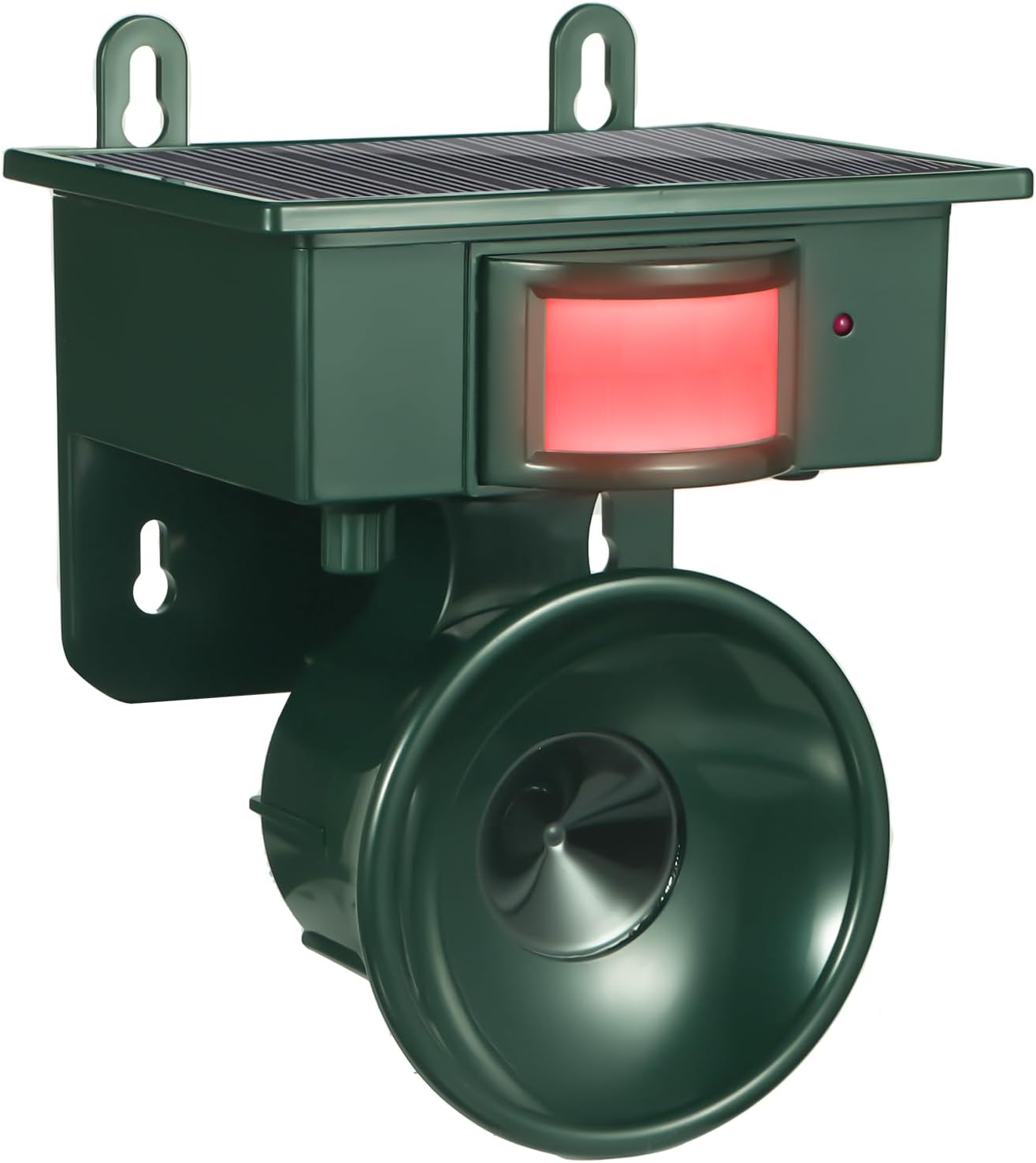
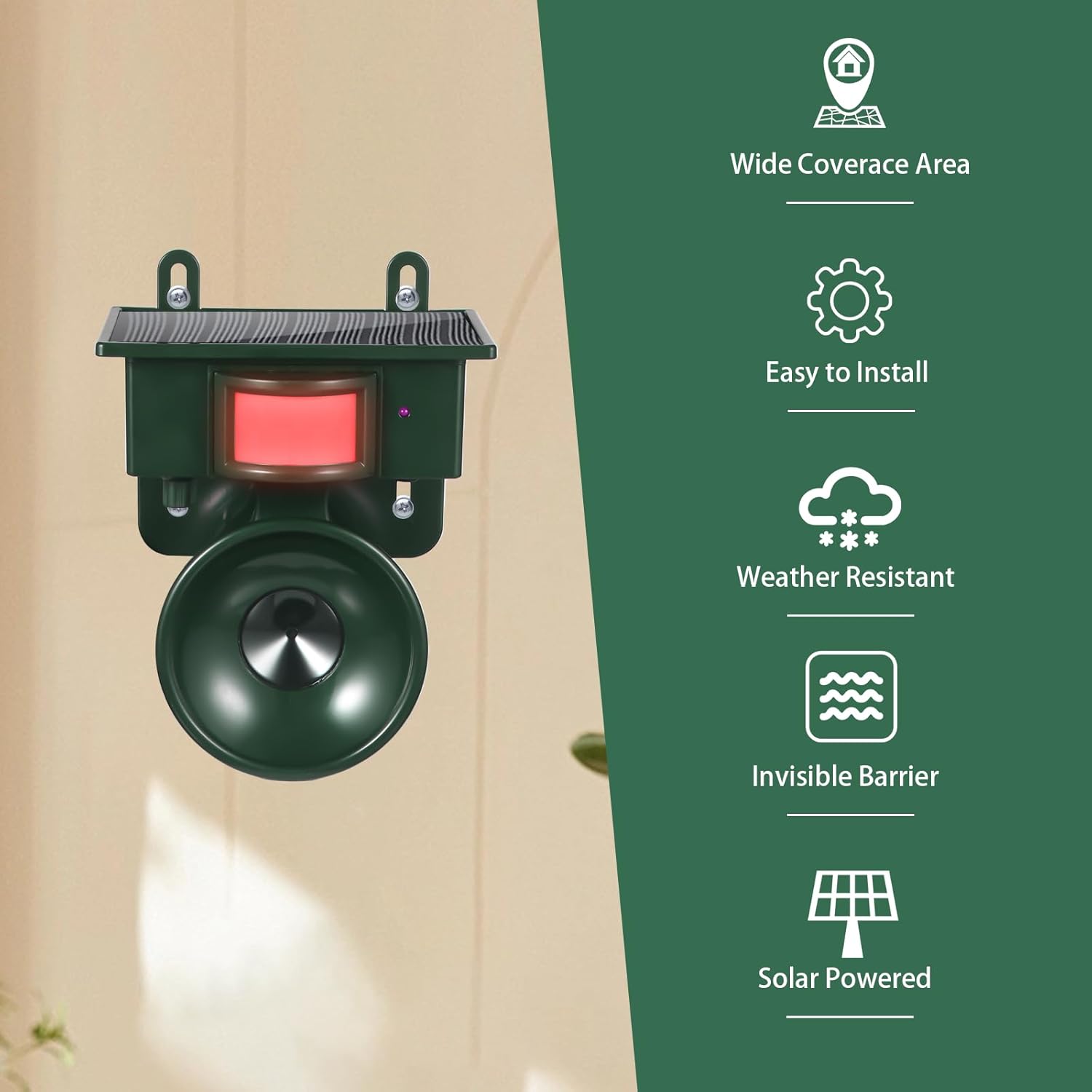
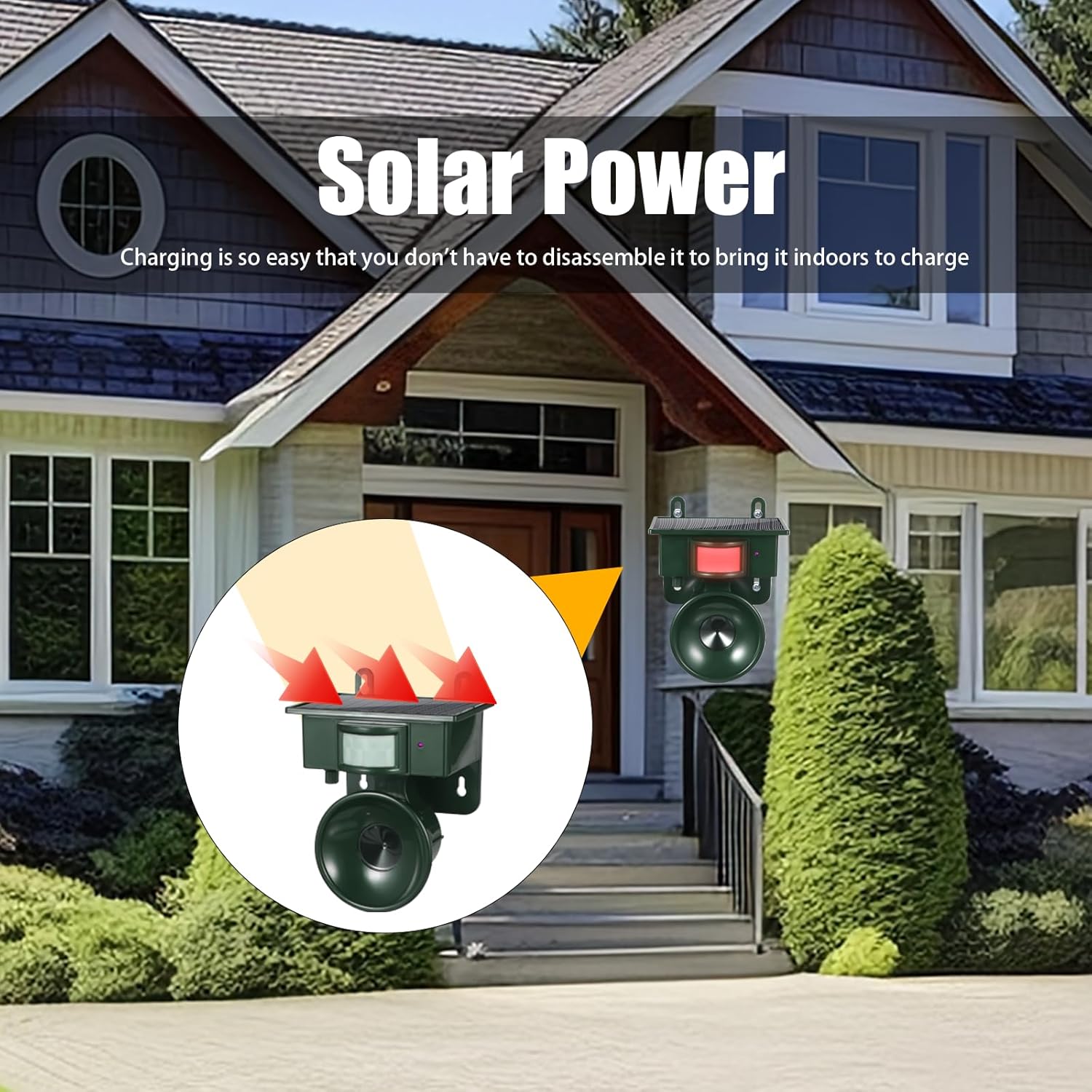
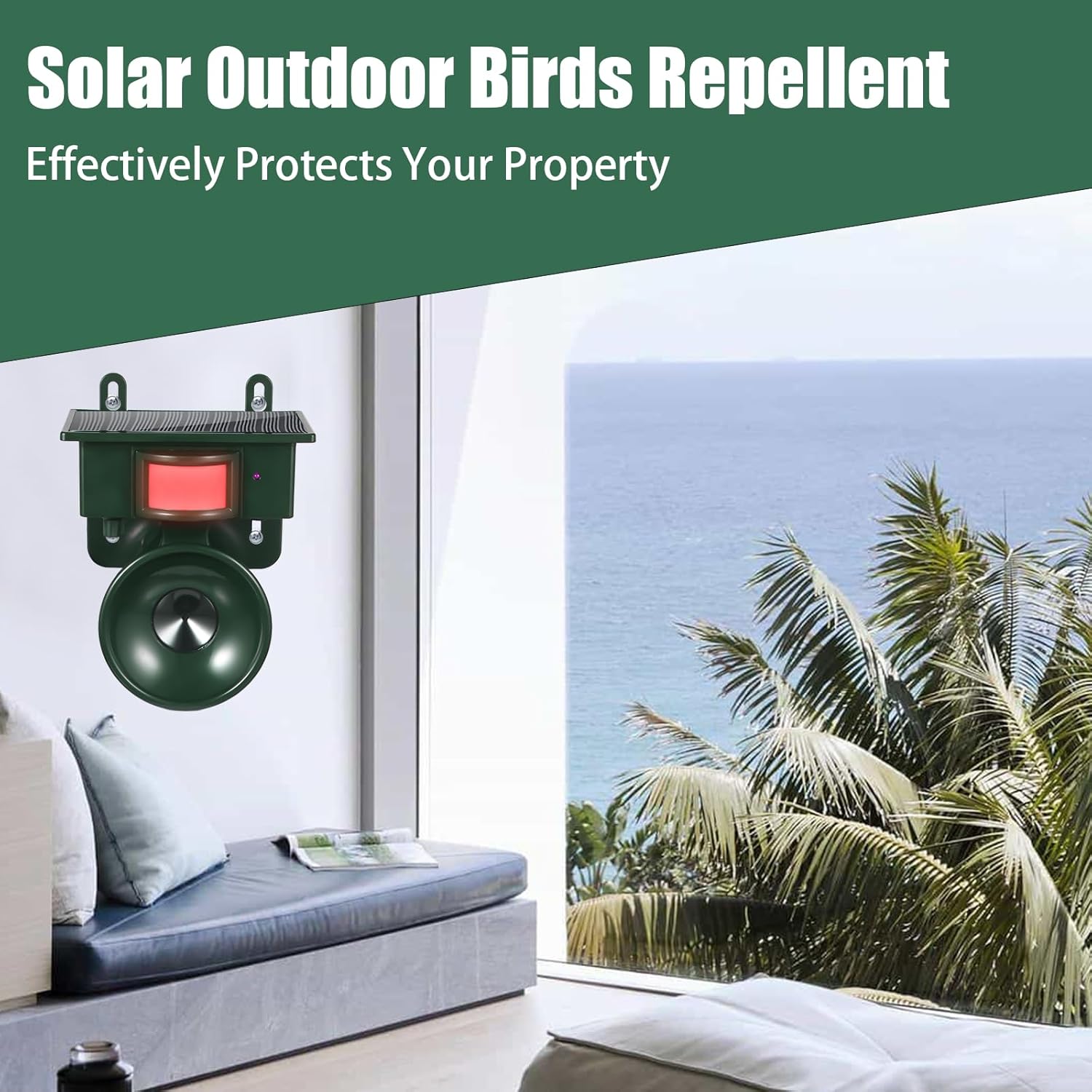
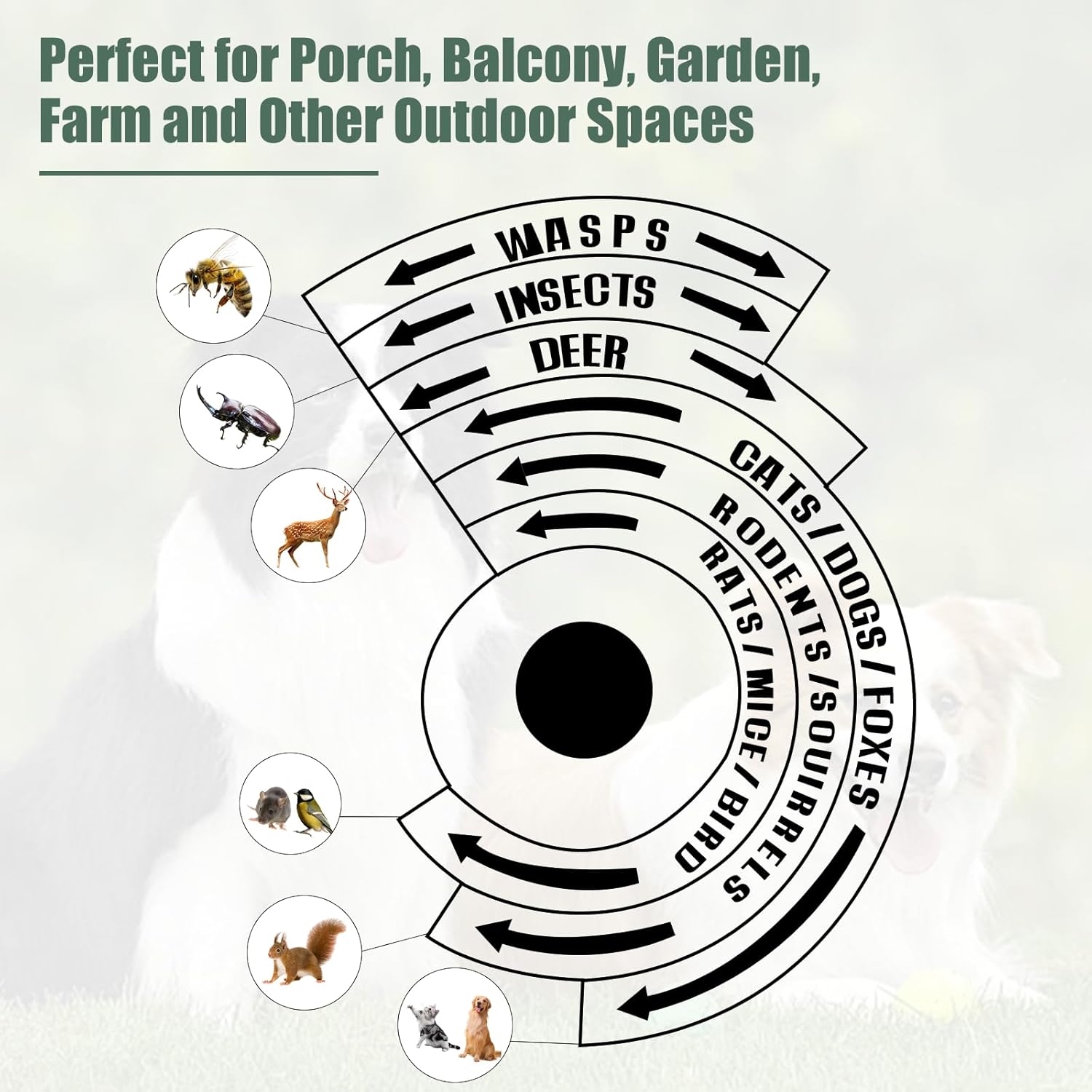
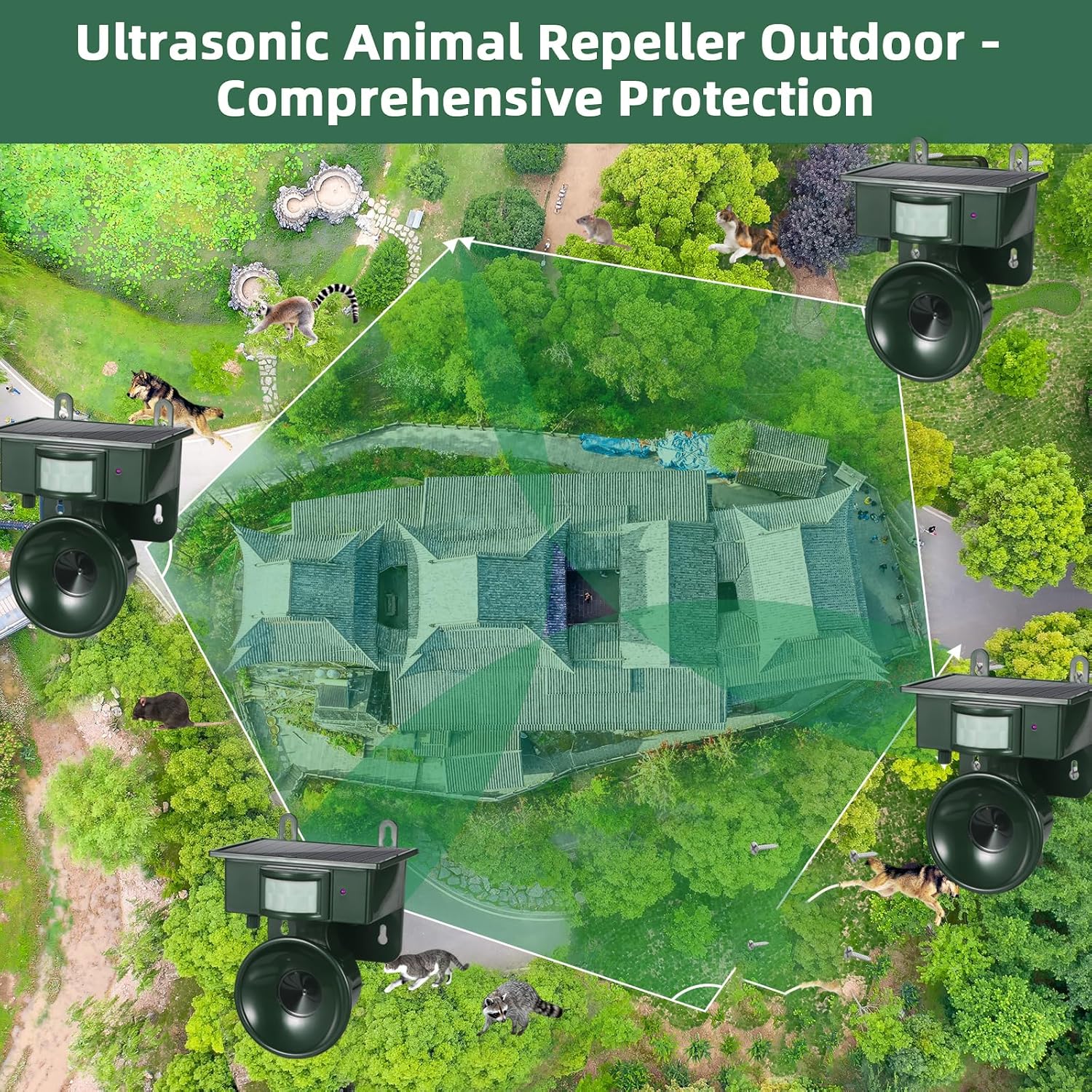
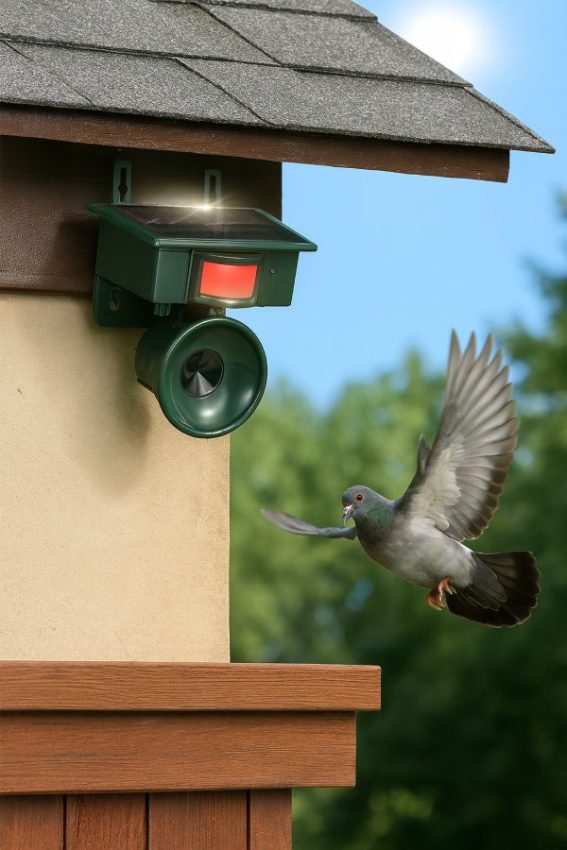
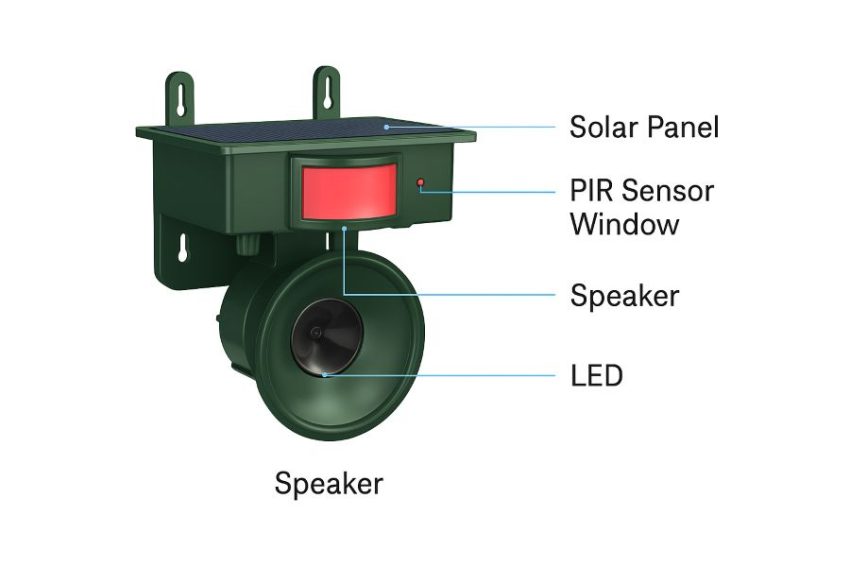
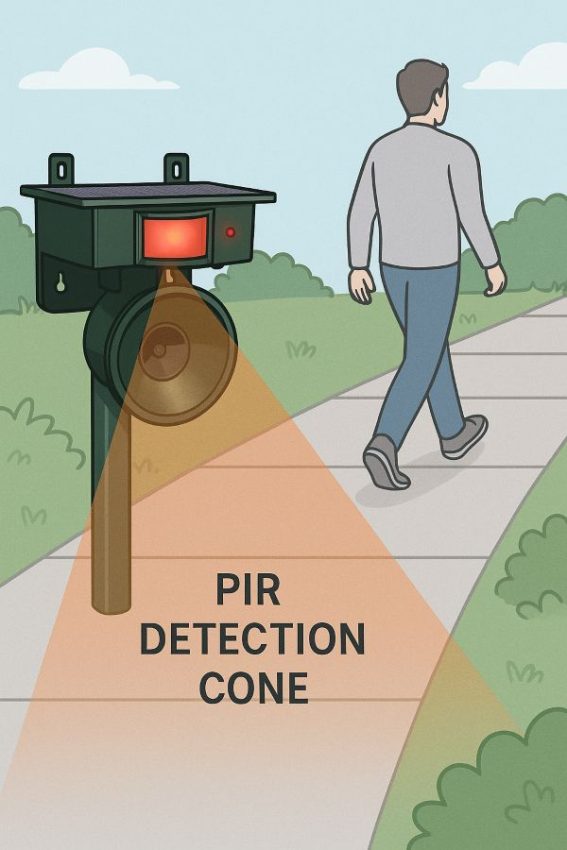
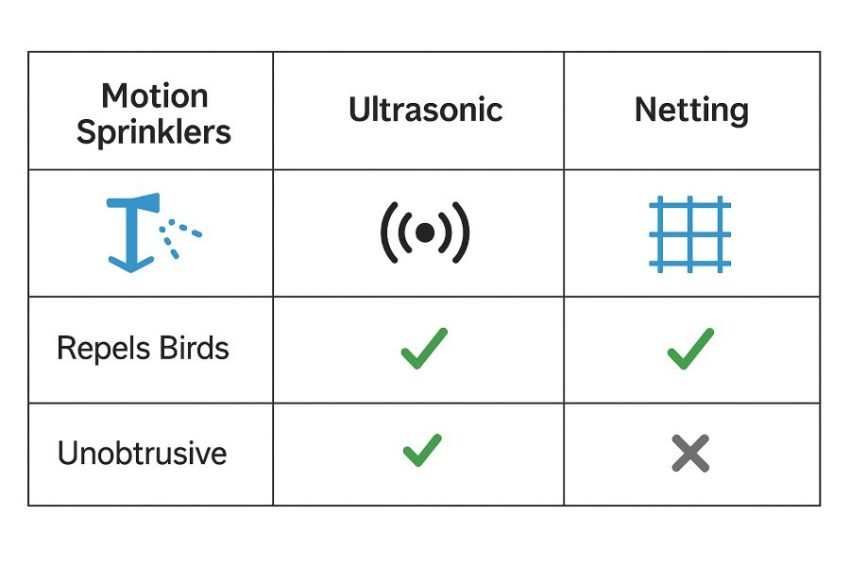
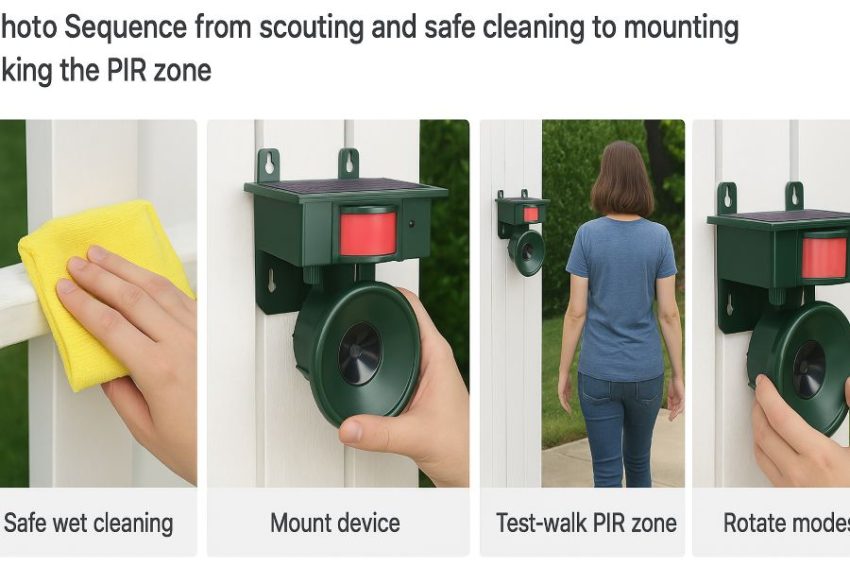
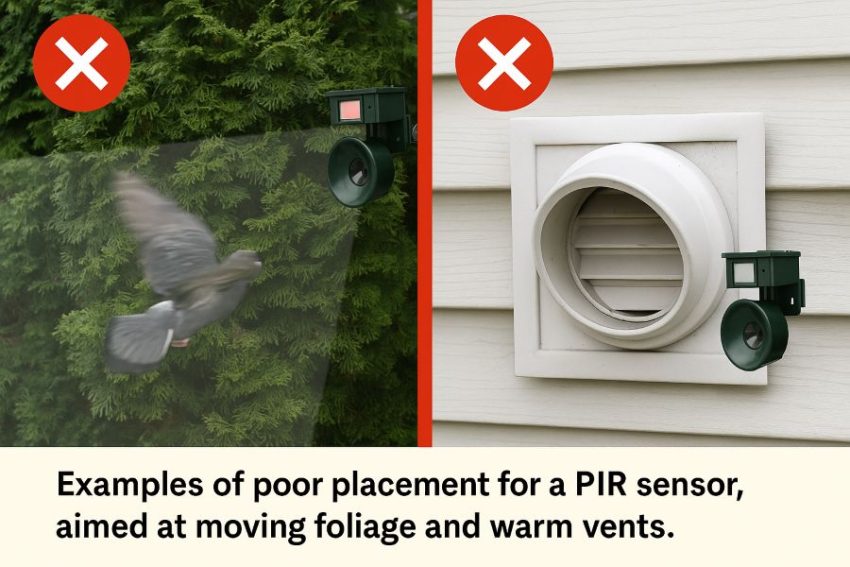
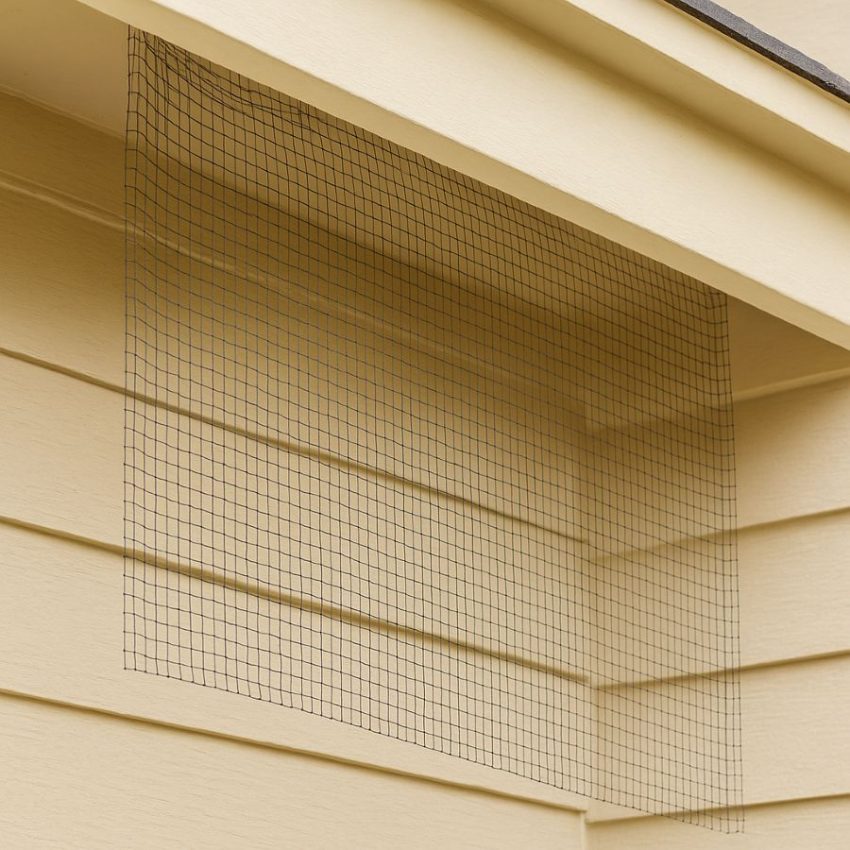
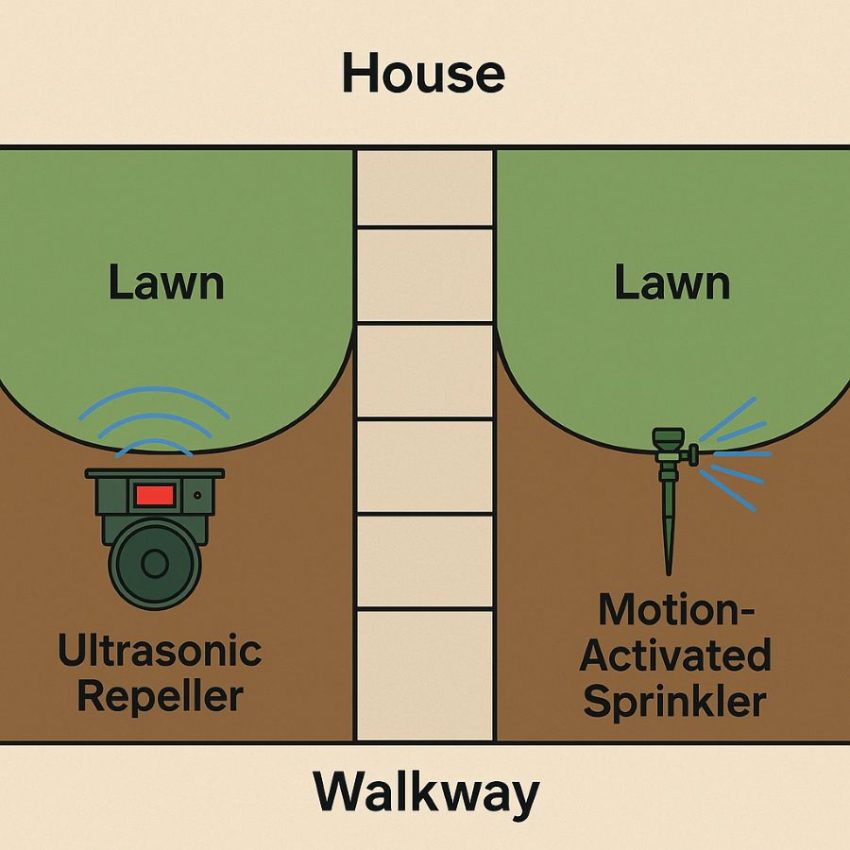
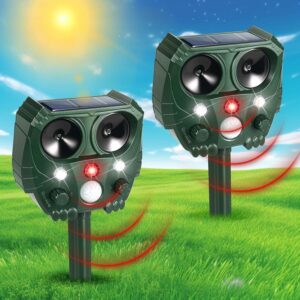
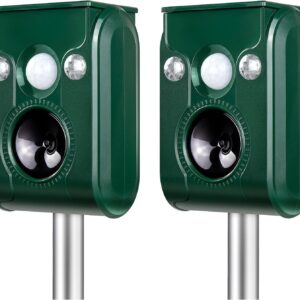
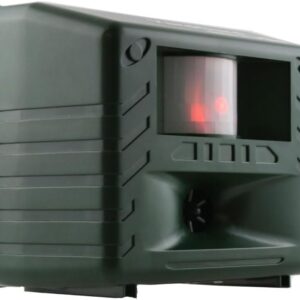
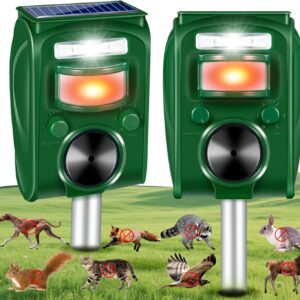
Reviews
There are no reviews yet.